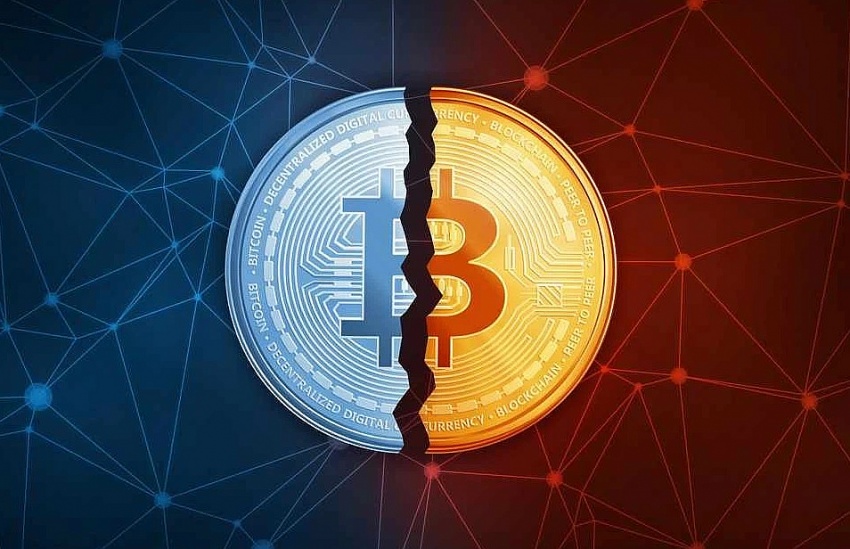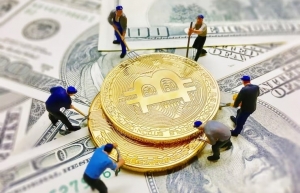INTERNATIONAL INVESTMENT
AND PORTAL
Bitcoin miners, whose computer processors run the world's most popular virtual currency, will soon face the process of "halving" -- a quadrennial phenomenon which alters the profitability of the industry.
 Bitcoin world faces 'halving': what's happening?, illustration photo
Bitcoin world faces 'halving': what's happening?, illustration photo
The looming occurrence, due later this month, has helped send bitcoin racing to a string of recent record highs so far this year.
- What is bitcoin? -
Bitcoin was created in 2008 by a person or group writing under the pseudonym Satoshi Nakamoto as a peer-to-peer decentralised electronic cash system.
The virtual unit was once the preserve of internet geeks and hobbyists but it has since exploded in popularity, with mining performed by huge banks of computers.
Bitcoins are traded via a decentralised registry system known as a blockchain.
- How does mining work? -
Bitcoin is created, or mined, as a reward when computers solve complex puzzles to decide which miner wins the privilege to validate the block and thus receive the reward.
The system requires massive computer processing power in order to manage and implement transactions.
That power is provided by miners, who do so in the hope they will receive new bitcoins for validating transaction data on the blockchain.
Commercial mining operations often occupy huge hangers or warehouses, and consume large amounts of electricity to power and cool the computers, which is a considerable cost on top of the equipment.
- What is halving? -
So-called halving is when cryptocurrency-mining companies and individuals find out the reduced payment that they will receive in return for their contribution to the system's smooth operation.
The first "halving" occurred in November 2012, the second in July 2016 and the third in May 2020. The fourth is due in mid-April.
The reward was originally set at 50 bitcoins but it was subsequently reduced to 12.5 and then to 6.25. It is now expected to drop to 3.125 bitcoins.
- Why reduce the reward? -
The halving process slows the rate at which new bitcoins are created, and therefore restricts supply.
The reward amount has been trimmed over time in order to implement Nakamoto's overall global limit of 21 million bitcoins.
Bitcoin was designed to go against the norms of traditional currencies, which can in contrast lose value over time when central banks increase money supply to boost economic growth.
- Why are prices soaring? -
Bitcoin, which enjoys increasing interest from institutional investors, has blazed a record-breaking trail this year on the prospect of halving, climaxing at $73,797.98 last month.
Halving tends to send the virtual currency shooting higher on the prospect of reduced supply.
The unit has also been bolstered this year by big moves toward greater trading accessibility. US authorities in January gave the green light to exchange-traded funds (ETFs) pegged to bitcoin's spot price, making it easier for mainstream investors to add the unit to their portfolio.
 Bitcoin's renewed euphoria as price keeps rising
Bitcoin's renewed euphoria as price keeps rising
Bitcoin is forecast to keep on rising after hitting fresh two-year highs above $50,000 on Thursday, leaving analysts to wonder whether investors have moved on from recent cryptocurrency setbacks, including scandals.
 Bitcoin tops $60,000, approaches all-time high
Bitcoin tops $60,000, approaches all-time high
Bitcoin passed the $60,000 mark on Wednesday, approaching its all-time high and continuing its unbridled rise since the approval of a new type of investment indexed to the cryptocurrency.
 Gold, bitcoin pull back from records as US stock markets slip
Gold, bitcoin pull back from records as US stock markets slip
Gold prices and bitcoin hit all-time highs Tuesday before paring some gains, while a sell-off in some tech stocks led to a slump in many stock markets around the world.
 Bitcoin hits fresh record above $71,000
Bitcoin hits fresh record above $71,000
Bitcoin hit a fresh record above $71,000 on Monday as demand for the cryptocurrency picks up amid optimism that the Federal Reserve will cut interest rates this year.
By AFP



















